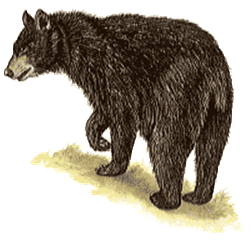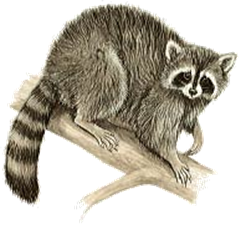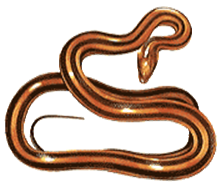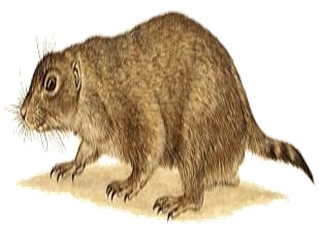THE
RELATIONSHIP BETWEEN RESOURCES AND
ORGANISMS
IN BIOMES
Unit Overview
In this unit we will continue our study of
biomes and how the abiotic and biotic factors influence the type of organisms
that live in a biome. Plants and animals
will have different characteristics that allow them to live in a particular
climate, which illustrates the great diversity of life on our planet. Once again, rainfall, temperature, and soil
type greatly influence each biome’s biodiversity.
Tundra Biome
The tundra is a region around
the North Pole. (See the map
below.) The temperature is above
freezing (32 degrees Fahrenheit) only about 55 days a year and then it only
gets up to 50 degrees Fahrenheit. During
the long winter it can get as cold as 60 degrees below zero. The average temperature is only 10 to 20
degrees Fahrenheit. Summer and winter
are the featured seasons. In summer the
sun shines nearly twenty-four hours a day and that is why the tundra is
sometimes called “the land of the midnight sun”. Usually very little water is available and
precipitation as snow is less than ten inches a year. Below the thin layer of soil is permanently
frozen ground called permafrost. In
summer when the top layer of frost melts, it forms marshes and lakes since the
water cannot sink into the permafrost. Because of the harsh climate, the tundra
has few plants and they are often small.
|
|
|

This picture, taken by Janne
Sinkkonen, is of Lapland, a northern region of Finland that is a tundra
biome. Note the lack of vegetation and
the rocky soil.
Typical plants include lichens often found
on rocks, small shrubs which grow in crevices or pockets where soil
accumulates, cushion plants which are small mounds, and cotton grass whose
seeds are distributed by the wind. Many
plants have dark red leaves so they can absorb more heat from the sun.

Although vegetation is scarce, various
animals are able to survive in this harsh climate. Some have white coats of fur in the winter so
they are less conspicuous while others may hibernate or migrate. Some of the tundra birds include the
gyrfalcon, a very large bird of prey that feeds mainly on rock ptarmigan and
willow grouse, and other birds that live here.
The snowy owl stays all year round while the ruddy turnstone, tundra
swan, and snow bunting fly further south in the winter.
Arctic animals include the arctic fox,
caribou, musk ox, Norway lemming, and polar bear. The white arctic fox lives in a burrow and
feeds mainly on rodents and birds.
Caribou or reindeer eat grasses in the summer and lichens in the
winter. Some migrate hundreds of miles
south in the winter in search of food.
The musk ox is an odd-looking animal with a very dense undercoat which
is waterproof and a long coarse outer coat that hangs almost to the
ground. They have broad hooves to keep
them from sinking into snow and horns on both sexes for protection. These animals were once near extinction but
have now made a comeback. The Norway
lemming is a small animal that eats grasses, shrubs, and mosses and serves as
food for other tundra inhabitants. It
can produce eight litters of six within one summer. This animal is known for its dramatic
population explosions every three to four years. The polar bear being a large mammal needs
lots of food. It eats mammals, fish,
birds, berries, and leaves. It often
ranges over large areas and can swim in the ocean. Although they are large animals, they can run
faster than a caribou over short distances.

A polar bear resting in the snow

From back to forefront: musk oxen, caribou, artic fox and snowy owl.
Desert Biome

Like the tundra, the desert has low
precipitation with less than ten inches a year.
Most desert areas are located 30 degrees north or south latitude from
the equator. Some are located by
mountains as those in the western United States where the moisture evaporated
from the Pacific Ocean falls as rain on the western slopes of the mountains,
leaving little to fall on the eastern slopes.
The Sonoran and Mojave Deserts are found in the United States. Other well-known deserts are the Sahara in
northern Africa and the Arabian on the Arabian Peninsula. These are known as hot deserts with
temperatures up to 131 degrees Fahrenheit during the day and as low as 32
degrees Fahrenheit at night as the sand radiates heat into the cloudless sky.
|
|
|
Less well-known deserts are the Iranian in
Iran, Afghanistan, and Pakistan, the Gobi in northern China and southern Mongolia,
and the Great Basin in Idaho, Nevada, Oregon, and Utah. These are cold deserts.
|
|
|
|
The coldest desert in the world, the Gobi, is very barren and has only 5% of its area covered with sand dunes which are shown here. |
Death Valley in the U.S. Sonoran Desert is a hot desert with less than 2 inches of annual rain fall and temperatures up to 125 degrees F. |
Most desert soils consist of sand, gravel,
and clay. Plants adapt to the harsh
conditions by having very tiny leaves called spines so water cannot be lost
through the leaves, as in the case of the cactus, or thick waxy leaves that can
hold moisture, as in the case of succulents like the yucca plant. Since the spines of a cactus cannot carry on
photosynthesis, this process is done by the stem where moisture is also
stored. The barrel cactus has a stem
with a pleated shape so it can expand to absorb lots of water when it rains or
contract during dry spells. The large
saguaro cactus has a large root system for absorbing moisture and has an
average lifespan of two hundred years. Bats
and insects sip the nectar from flowers that bloom on the tips of the stems and
many animals eat the plant itself. The
prickly pear has edible fruit for desert animals and uses its spines to repel
them.
The Joshua tree, found only in the Sonoran
Desert, is a valuable food source and habitat for some desert animals. It has two root systems, one which is used to
store water in bulbs as far as thirty feet underground. This tree is pollinated only by the Yucca
moth and to return the favor, the seeds of the Joshua tree serve as food for
the larva of the moth. The desert
ironwood is an important plant of the Sonoran Desert in the U.S. as are the
saguaro cactus and the Joshua tree. The
ironwood is a legume, a member of the pea family, but it is a tree and can grow
up to thirty feet tall although it is usually a low growing shrub. Its leaves and flowers attract insects and
birds and also supply shade beneath the tree that can lower the temperature as
much as 15 degrees Fahrenheit. It is
known as a nurse plant because, in this shade, seedlings of other plants
germinate. These small plants are
protected from being eaten by the low hanging thorny branches of the tree.


(Above) Notice the pleated stems of the barrel cactus (center) and the
saguaro cactus (left), which allows them to expand when absorbing water. The ironwood tree (right) blooms, providing
nectar for bats and insects. Below it,
seedlings are growing. The saguaro
cactus, only found in the Sonoran desert, stands tall as shelter and food for
many desert animals.
Desert
animals have adaptations, which allow them to live in this dry and often hot
climate. Some animals, such as the poisonous Gila monster of the southwestern
United States, live in borrows to protect them from the heat and only feed at
night. Another example is the spade foot
toad which spends nine months of the year underground. Other animals can go long periods without
water, like the camel. The fat sand rat
of Africa has a layer of fat to protect it from times when food is scarce. Jackrabbits found in the desert have large
ears to help cool them down as blood flows close to the skin in veins in their
ears. Among the snakes living in the
desert is the sidewinder, which moves sideways across the sand. This is an effective way of moving in sand and
allows minimum contact between the snake’s body and the hot sand. The endangered cactus ferruginous pygmy owl
is a tiny owl that lives in desert scrub where the small trees and cacti offer
it shelter and attract its many prey, such as birds, lizards, rodents, frogs,
and earthworms. It is a ferocious hunter
and can kill a dove twice its size, but unlike many owls, this one hunts during
the day. Another bird, made famous by cartoons,
is the roadrunner or black and white ground cuckoo. It lives in the Mojave Desert and prefers to
run rather than fly. It can reach speeds
of 18 miles per hour in pursuit of its prey, which includes snakes, lizards,
scorpions, birds, rodents, and insects.
Smaller Desert Animals


Cactus ferruginous pygmy owl
Larger mammals, such as bighorn sheep,
antelope, and coyote, can exist in the desert climate. Bighorn sheep once were
plentiful in the deserts of United States.
Today they are an endangered species.
The bighorn is the largest North American sheep standing up to 40 inches
at the shoulder and weighing up to 350 pounds.
Both sexes have horns but the males are very large weighing up to 30
pounds. Preferring rocky hillsides with
a clear view to watch for predators, these sheep were a favorite target of hunters
in years gone by. They have excellent
eyesight, hearing, and smell. They are
able to climb rocky ledges as their feet have large, shock absorbing pads that
grip hard rocky surfaces. Being
ruminants, they can survive on the grasses, sedges, and flowering annuals that
grow in the desert. If food is scarce,
they will eat shrubs and trees. Although
they get water from the food they eat, they do need to drink every three days
in summer, and the competition for water, both from cattle and man, has made this
difficult for the sheep. The sheep have
also been hindered from wandering in search of food by highways, fences, and
aqueducts.
Another endangered desert mammal found only
in the U.S. is the pronghorn antelope.
Though smaller than most deer, the pronghorn is the fastest North
American mammal, reaching speeds of 60 mph for a short time, and can maintain a
speed of 35 mph for longer periods of time.
Like the bighorn sheep, it is a ruminant so it can extract some water
from the sparse, coarse vegetation that it eats. Its large eyes allow it to see movement up to
four miles away, which is helpful in spotting predators, such as bobcats,
coyotes, and golden eagles which may attack the fawns. A characteristic which has contributed to
their vulnerability is an innate curiosity leading them to return to a spot
where something frightened them.
Unfortunately, Indians and pioneers used this to their advantage when
hunting the pronghorn antelope. To cope
with the desert heat, pronghorn can raise their hair to release body heat. On the African desert, the addax, another
antelope, adapts by acquiring water as it eats succulent plants, plants that
store water in its thick waxy leaves.
The presence of small and big mammals
attracts coyotes to the desert. Coyotes,
a member of the wolf family, are very adaptable and can survive wherever they
find food. They are clever hunters and
usually hunt at dusk, dawn, or through the night. Their diet is varied and includes carrion
(dead animals), birds, large insects, rodents, sheep, and deer.

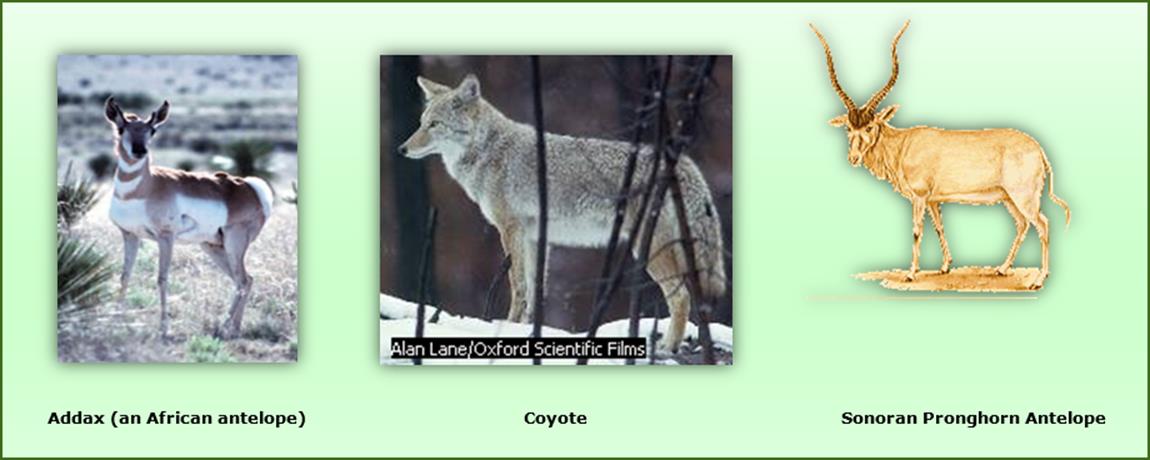
Taiga Biome
The taiga biome is the largest in the
world, covering a large portion of Europe, Canada, and Asia. (See map
below.) The summers are warm, but, for
six months of the year, the average temperature is below freezing. The yearly precipitation is between 12 and 33
inches, most of which falls as rain in the summer.
Because of the tilt of the
earth, the taiga has long nights during the winter and long days during the
summer. There is not a wide range of
plant life here, with most of the trees being conifers, such as spruce,
hemlock, and fir. These trees are
cone-shaped and can shed snow easily.
There are some deciduous trees, trees that lose their leaves in winter,
including aspen, birch, and poplar. In
the fall, the leaves of the deciduous trees are golden, while some shrubs
produce leaves that are a bright red.

Because the low temperatures,
decomposition is slow. Dead needles and
twigs produce a spongy surface on top of the thin soil, which is prone to
wildfires. However, the thick bark of
some trees does provide some protection from the fires.
Because the winters are dreary and cold,
animals will hibernate, migrate, or learn to cope. Birds in the region include the Bohemian
waxwing, the hawk owl, the pine grosbeaks, and red-throated lune. Plant-eating mammals include beavers,
squirrel, and snowshoe rabbits. A
relative of the mink, the ermine, has a white coat in winter except for the tip
of its tail which is black. The fur of
the ermine is often seen in children’s books as the fur that kings or queens
wear. The ermine eats eggs, fish, and
birds, while the marten survives on small mammals, fruits, and nuts as does the
wolverine, a very fierce animal that can kill animals larger than it. Large mammals in the Taiga Biome include the
moose, the largest of the deer family.
Moose eat water plants in the summer and woody shrubs in the
winter. The lynx, although becoming
scarce, feed on small to medium-sized mammals and ground birds, such as grouse.
|
|
|
|
Lynx |
Ermine |
|
|
|
|
|
Wolverine |
Marten |
Moose |
Temperate Deciduous
Forests

The temperate deciduous forest biome
experiences four seasons throughout the year: spring, summer, autumn, and
winter. This is due to the tilt of
Earth, which changes the directness of the sunlight on Earth’s surface. During the hot summers, the sun is shining
more directly on this part of the globe.
During the cold winters the sun is slanted at an angle and therefore its
energy is spread over a larger area, producing less warmth. This region includes the eastern half of the
United States and parts of Europe, Canada, Russia, China, and Japan. (See the map below.) One of the most striking features of this
biome is the varied colors of leaves in the fall as the deciduous trees prepare
to lose their leaves for the winter.
These trees include black walnut, butternut, locust, ash, red maple,
dogwood, sassafras, sugar maple, sumac, oak, beech, larch, elm, hickory,
sycamore, poplar, birch, tulip, and willow.
If you recognize many of these names, that is because they are a part of
our wooded areas around this area of Ohio.
Many of these trees are also valuable hardwoods used for making fine
furniture. Average rainfall is about 60
inches a year which supports the growth of these trees.
|
|
|
When the leaves fall and
winter comes to the deciduous forest, there is little cover so animals must
hibernate, migrate, or keep active.
Common animals that hibernate include the gray squirrel, the black bear,
and the ground hog, a type of marmot.
These animals eat constantly during the fall months to fatten themselves
up for their long winter of dormancy, as the search the forest and surrounding
fields for berries, nuts, insects, and roots.
Bears will eat young birds, fish, and small mammals as well. The raccoon, who also has a varied diet,
sleeps during the coldest part of winter, coming out only on warm days. The white-tailed deer feeds on grasses,
weeds, shrubs, twigs, fungi, lichens, and cornfields and is very adaptable even
though it is usually shy and elusive. A
more aggressive mammal is the wild boar, a relative of the domestic pig. Boars eat roots and tubers, foraging at night
and during the morning hours.
|
|
|
|
|
Black
Bear |
Gray
Squirrel |
Raccoon |
Birds found in the
deciduous forests include the cardinal, turkey, goshawk, blue jay, robin,
sparrows, blackbirds, and the yellow-bellied sapsucker, many of which migrate
during winter to warmer climates. The
sapsucker is so-called because it makes a hole in tree bark in order to suck
the sap of the tree. When it returns to
this hole for another meal, it often feasts on insects attracted to the hole by
the sap that is oozing out of it. The
wild turkey has become quite prevalent in eastern Ohio over the last
decade. The large birds are good flyers
over a short distance and roost in trees.
Most of their food - seeds, nuts, berries, and insects - is found on the
ground. Turkeys often hatch eight to
fifteen chicks at a time.
A common reptile is the
rat snake, exhibiting many species of various colorations. It is an agile climber, feeds during the day,
and like most reptiles in this region, it hibernates in the winter. A cheerful messenger of spring is the amphibian,
the spring peeper, so called because of the bell-like chorus the males create
at dusk in early spring. Because of
their toe pads, they can climb trees and shrubs but are often found near
water. The peeper can also jump
seventeen times its body length. They
are mottled brown and only three-quarters to an inch in length so they are
difficult to see.
|
|
|
|
|
Spring
Peeper |
Wild
Turkey |
Rat
Snake |
The Grasslands
|
|
|
As seen in the map below,
grasslands are on every continent except Antarctica. They cover one-fourth of the earth. They are characterized by huge, open spaces,
few bushes, trees by rivers and streams, and soil which is very deep and
fertile. The tropical grasslands have a
hot climate year round while the temperate grasslands have hot summers and
harsh winters. Grasslands are known by
other names: in South America, pampas; in Africa, savannahs, and in Europe,
steppes. Our Great Plains are the U.S.
grasslands, and are called prairies. The
soil has developed from hundreds of years of vegetation decomposing. This makes the grasslands very good farm
land. For this reason they are sometimes
called the breadbasket of the world. In
our country, much of the original prairie is gone. This is where the bison, wolves, antelope,
and bears roamed. Wild praire flowers
include the prairie blazing star, which attracts butterflies, and the purple
coneflower, which attracts goldfinches.
Prairies were maintained naturally by wildfires caused by lightning
which burned off taller plants and weeds.
Now, farmers mow or burn the fields.
As the rainfall varies,
so does the type of grass that grows.
The tall-grass prairie in the eastern part of the U.S. has rainfall up
to 30 inches a year and native grasses would grow up to five feet tall. The mixed-grass prairie further west had
grasses up to three feet tall, and the driest region, with only ten inches of
rainfall annually, was near the Rockies and had grasses only two feet
tall. The largest native plant was big
bluestem grass or turkeyfoot which grew up to eleven feet tall and was a
favorite food of the bison. Common trees
that grew along the streams were the boxelder (a form of maple), the silver
maple, and the red bud tree.
|
|
|
|
|
Purple Coneflower |
Tallgrass Prairie including Big Bluestem |
Blazing Star Plants |
Animals common to the
U.S. plains, at least in times past, were the greater prairie chicken, the
black-footed ferret, the black-tailed prairie dog, the bison, and pronghorn
antelope. Animals that live in the
savannahs of Africa are those we consider to be zoo animals. Among them are the zebra, African elephant,
giraffe, lion, ostrich, black rhinocerous, brown hyena, and warthog.
|
|
|
|
|
Warthog |
Brown
Hyena |
Ostrich |
|
|
|
|
|
|
Black-Footed
Ferret |
Black-Tailed
Prairie Dog |
Greater
Prairie Chicken |
Pronghorn
Antelope |












